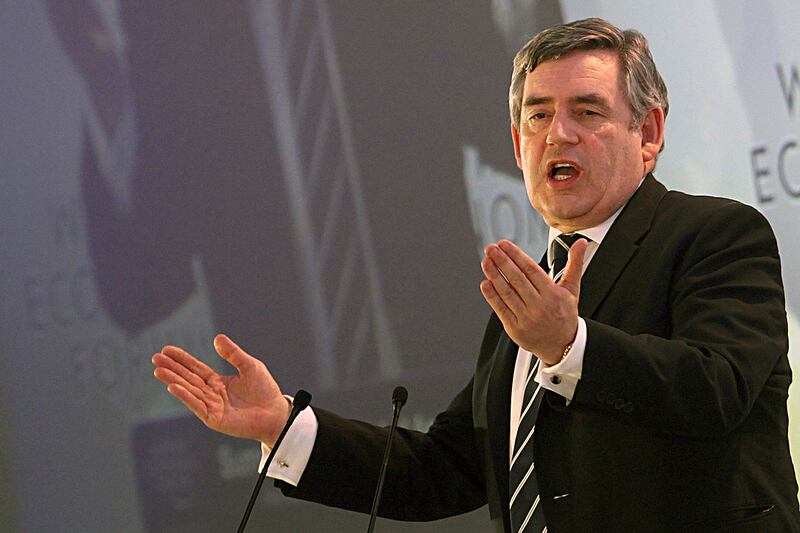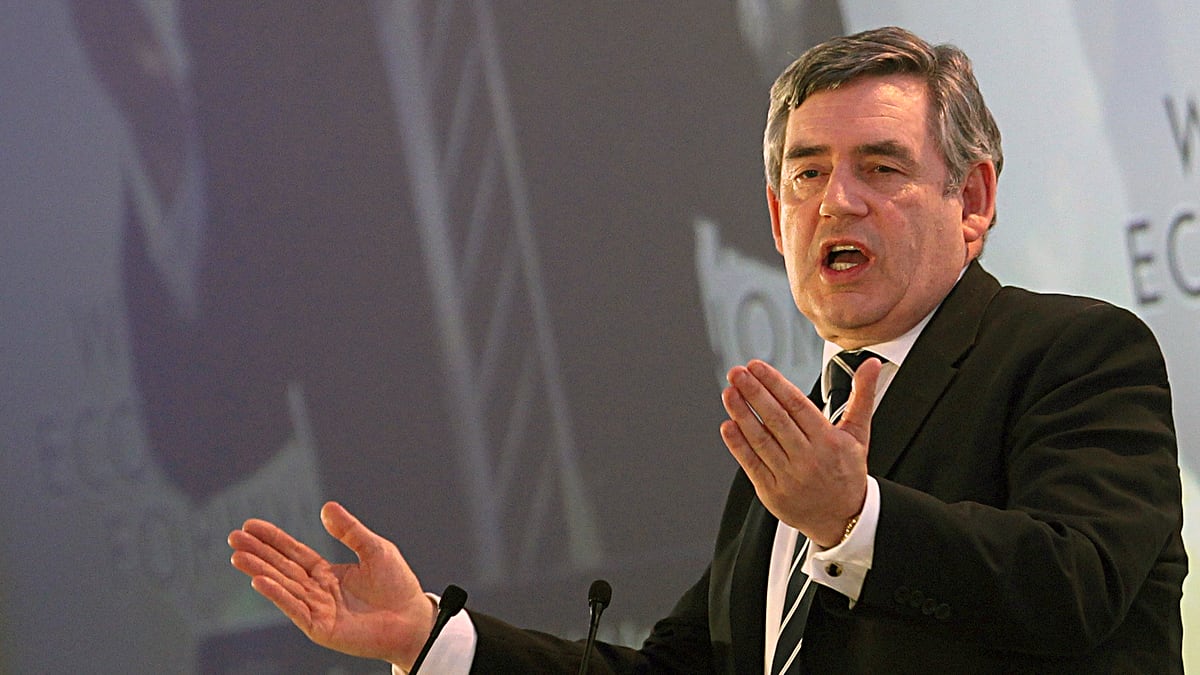The only international language people understand, it is said, is the cry of a child. I will never forget my visit this May to a one-room village school just outside the capital of the world’s newest state, South Sudan. There were no more than 20 children inside—the most the tiny hut could hold—but scores more crowded outside trying to peer in through the single window. They were desperate to see what had been denied them: the chance of an education, a right most of us take for granted. Beyond their curiosity, it was possible to see something else, something profoundly disturbing: in their eyes I could see a sadness at being excluded from the future, their slow-dawning realization that they would not have the chances of their peers inside. It was the start of the loss of hope.
A few minutes later I talked to mothers in a village tent. Many were weak from illness. All were living without running water or sanitation, condemned to tents and temporary huts. One of them told me she had been forced to marry at the age of 12. Yet what every single one of these mothers wanted more than anything was a place in the school for their child, a chance for their children to have a better a life. One million—some 35 percent—of South Sudan’s children still cannot go to school. Around the world, more than 60 million children are in the same position, deprived of even the most basic of schooling in the year 2012.
Two weeks ago, I met with Nobel Peace Prize winner Aung San Suu Kyi to talk about how we could provide teachers for half a million Burmese children, including thousands who have spent years living in camps in Thailand. The Burmese parliamentarian, who was imprisoned for decades for her political activism, told me that if an education for every child in Burma could be one of the fruits of her freedom, then every parent would see the benefits of Burma’s road to democracy. She asked my wife, Sarah, and me to draw up a plan to channel international resources towards a place in school for every Burmese child.
Witnessing the pain of a child excluded from school can, of course, never evoke the same heartache as seeing an infant starving to death, or a girl suffering from malaria or AIDS or a boy brutalized as a child soldier. Yet for millions of children, an education is the only route out of famine, poverty, disease, and conflict. Wherever it has taken root in the developing world, education has been the key to better living standards, improved health care, and jobs. Education is integral to ending child labor, child marriage and pregnancy, and even child soldiers. It provides choices and alternatives. In a world where your income and wealth are increasingly determined by your achievements in education, it replaces the zero options of despair with the endless possibilities of hope.

Our urgent priority must be to make sure the world community meets the promise that it made to its children of a quality education for all by the end of 2015. While we may struggle to meet our targets for reducing maternal mortality, infant mortality, and gender inequality, education for the world’s poorest children is the one unmet goal we can certainly deliver in the next three and a half years. There are no scientific, medical, or technological barriers to its attainment. It is simply a matter of will.
During the past two years, while chairing a high level panel on global education, I have come to realize that there is great work done by UNESCO, UNICEF, the World Bank, and the Global Partnership for Education, but that we need a coordinated boost to our efforts of the kind outlined by the U.N. secretary general, Ban Ki-moon. Under the path-breaking leadership of Qatar’s royal highness, Sheikha Mozah, there is increasing global awareness about the importance of getting every child to school, for the first time in world history. A Global Business Coalition for Education has enlisted business leaders, including India’s Ratan Tata, Nigeria’s Aliko Dangote, and Mexico’s Carlos Slim. Because churches and faith groups provide one third of schooling in Africa, the archbishop of Canterbury, the Vatican, the U.K. chief rabbi, and other faith leaders have been invited to join the first Global Faiths Coalition for Education. Meanwhile, the Web's inventor, Tim Berners-Lee, has been working to achieve his vision of 100 percent Internet connection, ensuring that the poorest school in the most remote corner of the world is linked up to the best libraries and educational materials
The life story of Ban Ki-moon is the best illustration of the good that coordinated action on global education can do. Brought up in war-torn Korea, his education was only possible because of the work of UNICEF, who provided the teaching—often under a tree—and UNESCO, who provided the books. One of the books he received from UNESCO urged the pupils to work hard and by doing so repay the efforts of the United Nations. The power of global education that changed Ban Ki-moon's life for good can now change the lives of millions more.
Brown is the former British prime minister. On July 13, he was appointed the United Nations’ special envoy for global education.






